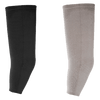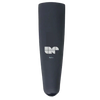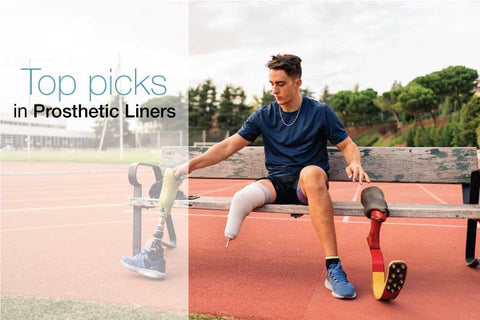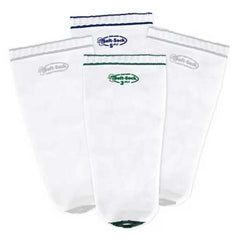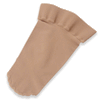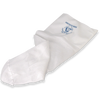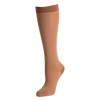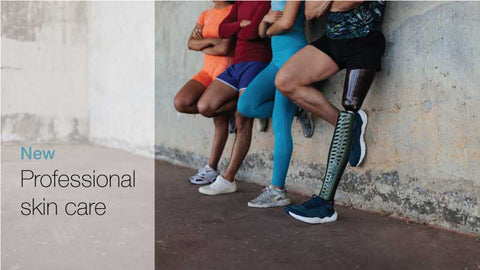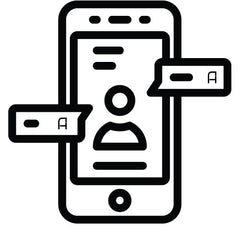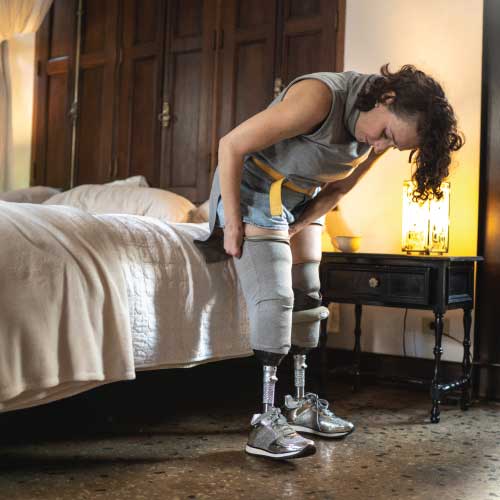This Tiny Patch Makes Bionic Limbs Feel Temperature
Reading Time: 6 minutes
___
Summary:
-
Johns Hopkins APL researchers restore temperature sensation in prosthetic limbs
-
Dime-sized patch lets amputees feel cold via thermoelectric tech
-
First real-time chill detection using brain-connected robotic arms
-
Breakthrough could speed non-invasive sensory feedback adoption
___
For individuals experiencing limb loss or limb difference, advancements in technology have greatly improved movement restoration. Today’s prosthetics can grasp objects, type on keyboards, and even react to thoughts. However, the sense of touch is still missing. Recently, researchers at the Johns Hopkins Applied Physics Laboratory (APL) might have made progress in restoring this sensation, beginning with the ability to feel cold.

Restoring the lost sense of touch
In 2020, APL researchers began developing a bandage-thin, dime-sized patch aimed at restoring cold sensations for individuals living with limb loss. This patch, which can be applied directly on the skin or integrated into a prosthetic liner, employs thermoelectric technology to transfer heat from one side to the other, producing a quick and natural cooling feeling.
Four volunteers, including Johnny Matheny—who lost his arm to fibrosarcoma, a rare bone cancer, nearly 20 years ago—tested the device. Matheny has participated in advanced prosthetics research, experimenting with robotic arms controlled by his thoughts. Despite these high-tech limbs, he still yearned to feel.
In one experiment, Matheny’s prosthetic arm—fitted with a fingertip temperature sensor—was connected to the new stimulator patch on his upper arm. When he grasped a series of soda cans, he immediately identified one as cold.
In one test, Matheny’s prosthetic arm—fitted with a fingertip temperature sensor—was connected to the new stimulator patch on his upper arm. When he grasped a series of soda cans, he immediately identified one as cold. In an interview with Wired, he said it felt unreal and that he hadn’t experienced that sensation since before his amputation.
Why sensory feedback matters
In the same Wired interview, Carnegie Mellon University neuroengineer Doug Weber said sensory feedback is just as essential as movement itself. Without it, users struggle to gauge how tightly they’re gripping or even if their hand is correctly positioned. For prosthetic users, the absence of feedback can lead to frustration and even device abandonment.
But touch involves more than just pressure or vibration. Luke Osborn, the lead author of the study, notes in an interview with Wired that it also includes complex sensations like temperature. Emily Graczyk from Case Western Reserve University adds that temperature perception also holds emotional and social significance, helping people feel connected and warm in both literal and figurative senses.
The science behind feeling cold
When a limb is amputated, the nerves that used to send signals to and from the hand are cut. However, these nerve endings can still grow back and connect with nearby skin on the residual limb. By electrically or thermally stimulating specific patches of skin, researchers can evoke sensations that seem to originate from the missing hand.
In comparison, traditional prosthetic research uses electrical stimulation, which works well for touch and vibration but cannot accurately reproduce temperature sensations. This is because the nerve fibers responsible for sensing heat and cold are tiny, uninsulated, and hard to activate electrically. According to Graczyk, the most effective method to recreate these sensations is straightforward: directly applying heat or cold.
Engineering the fastest cooler on Earth
To replicate real temperature sensations, signals must reach the brain within half a second—fast enough to feel natural. This challenge was taken on by Rama Venkatasubramanian, APL’s chief thermoelectrics technologist, who has 25 years of experience designing cooling systems for satellites and infrared sensors.
While commercial thermoelectric coolers are available, they tend to be bulky and slow. Venkatasubramanian innovated by miniaturizing the concept, creating a flexible film just 20-25 microns thick—less than half the width of a human hair. By using electrons to transfer heat across layers, his invention functions like a microscopic refrigerator with incredible speed. In laboratory tests, it achieved the most intense and efficient cooling near room temperature to date.
When compared to standard cooling devices, the patch delivered temperature sensations four times faster and twice as intense. Even individuals without amputations experienced the rapid, vivid chill when testing it on their fingertips.
Reconnecting body and mind
In follow-up experiments, Matheny attempted to identify cold objects using his prosthetic hand. Each time, the sensor detected the cold can and activated the stimulator patch on his arm, stimulating the nerves connected to his phantom fingers. He recognized the cold soda instantly in every trial. He said that it felt like his own fingers were feeling it.
The implications go beyond novelty. Because the patch is non-invasive—no surgery required—it could easily be integrated into prosthetic liners, making regulatory approval faster than for implanted systems.
A brighter future for prosthetics
By integrating temperature feedback with vibration and fine motor control, prosthetic limbs could soon replicate a broader spectrum of human tactile sensation. Matheny envisions a future where artificial limbs detect warmth or cold, just as his natural arm once did—excluding, of course, the sensation of pain, which he’s glad to omit.
However, researchers like Graczyk highlight that even discomfort plays a part in embodiment. Pain helps define physical boundaries and reminds us where our body ends and the environment begins. Restoring these boundaries can help many users regain a sense of wholeness.
Osborn believes this technology represents a new frontier, stating that they can now push the boundaries of what prosthetic arms can do and give someone the ability to experience something they couldn’t before.
For individuals like Matheny, that experience might be as simple—and as meaningful—as sensing the chill of a cold beverage or the warmth of a loved one’s hand.
Related Reading:
People With Upper Limb Loss Can Feel Warmth on Their Missing Hands
New Device Tricks the Brain Into Thinking Missing Limb Still Exists

